AMD's Radeon HD 6990: The New Single Card King
by Ryan Smith on March 8, 2011 12:01 AM EST- Posted in
- AMD
- Radeon HD 6990
- GPUs
Meet The 6990
If you recall our coverage on the 5970, we found a few areas where AMD was lacking. The cooling on the 5970 was sufficient to run the GPUs even at 5870 clocks and voltages, however the cooling on the VRMs was lacking, leading to real world programs trigging the VRM thermal protection mechanism; and while this was within safety guidelines, it’s not a comfortable place to be for long term operation. This ultimately led to us writing off the 5970OC as a 100% reliable product, sticking to recommending the 5970 solely at stock speeds.
The design of the 6990 in turn reads very much like a response to our findings in true engineering fashion. Furthermore for the 6990 AMD not only had to take a look at the 5970’s weaknesses, but also how to handle an even greater power load. The result is that the 6990 is distinctly different from the 5970 before it.
Compared to the 5970, the 6990 is ever so slightly shorter, thanks in large part to the fact than the 6000 series casing is more squared off compared to the 5000 series’ tapered design. As a result it comes in at 11.5” for the PCB (the same as the 5970), and with casing a full 12” long compared to the 5970’s 12.16”. This means that the 6990 has effectively the same space requirements as the 5970, cooling notwithstanding.
Meanwhile it’s the fan however that is going to catch the most attention and this is where we’re going to dovetail in to cooling. The 5970’s traditional blower had its strengths and weaknesses, the strengths being that blowers are relatively forgiving about a case’s ability to exhaust hot air, and the weaknesses being that the GPU (and VRMs) closest to the fan received better cooling than the farther GPU. The VRMs proved to be particularly problematic, as they could overheat well before the GPUs did and AMD does not spin up their fans based on VRM temperatures.
Correcting for this and at the same time allowing for even greater heat dissipation, the rear blower design is out. Its replacement is a design that we’ve seen in 3rd party cards before such as the Asus ARES 5870X2, but not in a reference design: a center-mounted fan/blower with a GPU to each side. The difference is critical and indeed cannot be understated: a rear blower channels most hot air outside of the case, while a center-mounted blower effectively splits the card in two, with one GPU + supporting chips being exhausted outside of the case, and the 2nd GPU + supporting chips being exhausted inside the case. The design is still enclosed, so everything goes out either the front or back of the card while fresh air is pulled in the center.
With the replacement of the blower, so has gone the heatsink. The 5970’s single large vapor chamber + heatsink design has been replaced in favor of a segmented heatsink, further driving home the concept that the 6990 is closer to 2 video cards sharing 1PCB than it is 2 GPUs on one card. Each heatsink in turn is connected to the GPU via its own vapor chamber, resulting in the GPUs being fully isolated from each other as far as cooling is concerned.
Even the thermal paste connecting the GPUs to the vapor chambers has been changed for the 6990 – AMD has replaced traditional paste with a phase change material. Phase change materials – pastes/pads of material that melt and solidify based on temperature are nothing new, however they’re still exotic; material similar to what AMD is using is not readily available as paste is. AMD even went so far as to suggest that reviewers not directly disassemble their 6990s as it would require a new application of phase change paste in order to achieve the same efficiency as the original material. The net result of all of this by AMD’s numbers is that the phase change material is 8% better than the regular paste they’ve been using.
Rounding out our focus on cooling is the VRMs, which have been relocated in order to correct for the 5970’s limited VRM cooling capabilities. The VRMs and controllers are now at the center of the board – now they’re cooled before the GPUs or RAM modules are. The profoundness of this is twofold: not only is it an improvement on the 5970, but with the 6990’s higher power consumption VRM cooling is even more important. As with the 6970, voltage regulation is supplied by Volterra MOSFETs and controllers.
All told, while the 5970 was designed to handle and dissipate 400W of heat, the 6990 is officially designed for 450W. In practice, at its limits in our test rig this is closer to 500W. To handle and dissipate that much heat in roughly 72in3 of space is nothing short of amazing.


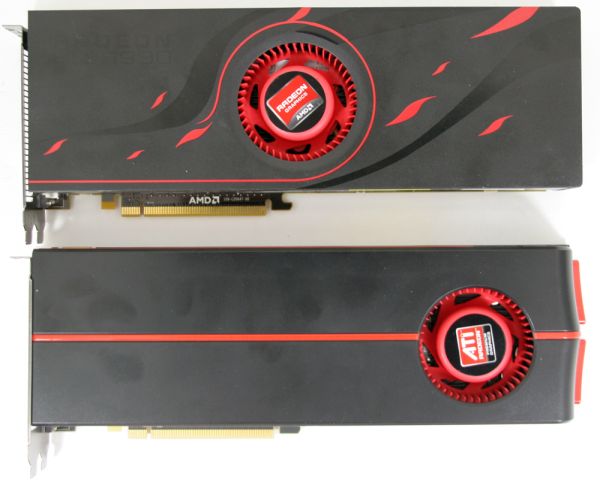

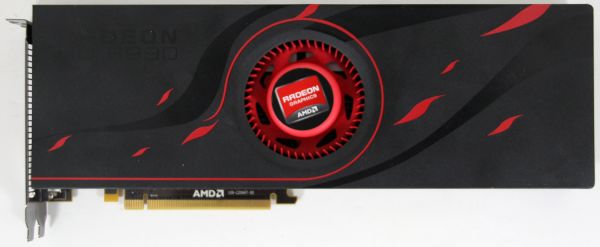
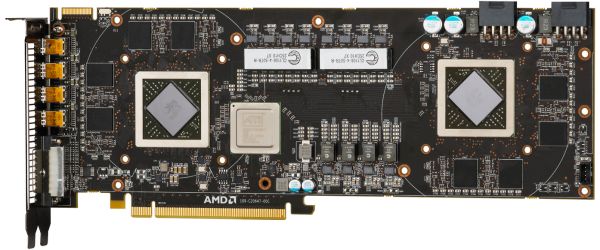
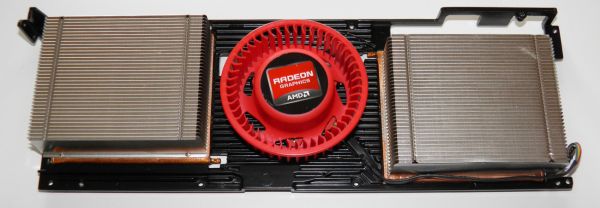
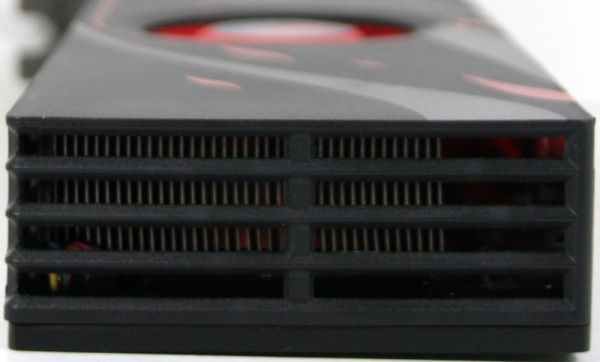
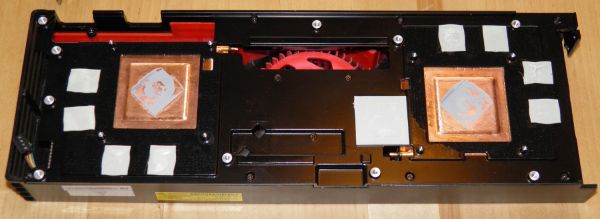









130 Comments
View All Comments
smookyolo - Tuesday, March 8, 2011 - link
My 470 still beats this at compute tasks. Hehehe.And damn, this card is noisy.
RussianSensation - Tuesday, March 8, 2011 - link
Not even close, unless you are talking about outdated distributed computing projects like Folding@Home code. Try any of the modern DC projects like Collatz Conjecture, MilkyWay@home, etc. and a single HD4850 will smoke a GTX580. This is because Fermi cards are limited to 1/8th of their double-precision performance.In other words, an HD6990 which has 5,100 Gflops of single-precision performance will have 1,275 Glops double precision performance (since AMD allows for 1/4th of its SP). In comparison, the GTX470 has 1,089 Gflops of SP performance which only translates into 136 Gflops in DP. Therefore, a single HD6990 is 9.4x faster in modern computational GPGPU tasks.
palladium - Tuesday, March 8, 2011 - link
Those are just theoretical performance numbers. Not all programs *even newer ones* can effectively extract ILP from AMD's VLIW4 architecture. Those that can will no doubt with faster; others that can't would be slower. As far as I'm aware lots of programs still prefer nV's scalar arch but that might change with time.MrSpadge - Tuesday, March 8, 2011 - link
Well.. if you can oly use 1 of 4 VLIW units in DP then you don't need any ILP. Just keep the threads in flight and it's almost like nVidias scalar architecture, just with everything else being different ;)MrS
IanCutress - Tuesday, March 8, 2011 - link
It all depends on the driver and compiler implementation, and the guy/gal coding it. If you code the same but the compilers are generations apart, then the compiler with the higher generation wins out. If you've had more experience with CUDA based OpenCL, then your NVIDIA OpenCL implementation will outperform your ATI Stream implementation. Pick your card for it's purpose. My homebrew stuff works great on NVIDIA, but I only code for NVIDIA - same thing for big league compute directions.stx53550 - Tuesday, March 15, 2011 - link
off yourself idiotm.amitava - Tuesday, March 8, 2011 - link
".....Cayman’s better power management, leading to a TDP of 37W"- is it honestly THAT good? :P
m.amitava - Tuesday, March 8, 2011 - link
oops...re-read...that was idle TDP !!MamiyaOtaru - Tuesday, March 8, 2011 - link
my old 7900gt used 48 at loadD:
Don't like the direction this is going. In GPUs it's hard to see any performance advances that don't come with equivalent increases in power usage, unlike what Core 2 was compared to Pentium4.
Shadowmaster625 - Tuesday, March 8, 2011 - link
Are you kidding? I have a 7900GTX I dont even use, because it fried my only spare large power supply. A 5670 is twice as fast and consumes next to nothing.